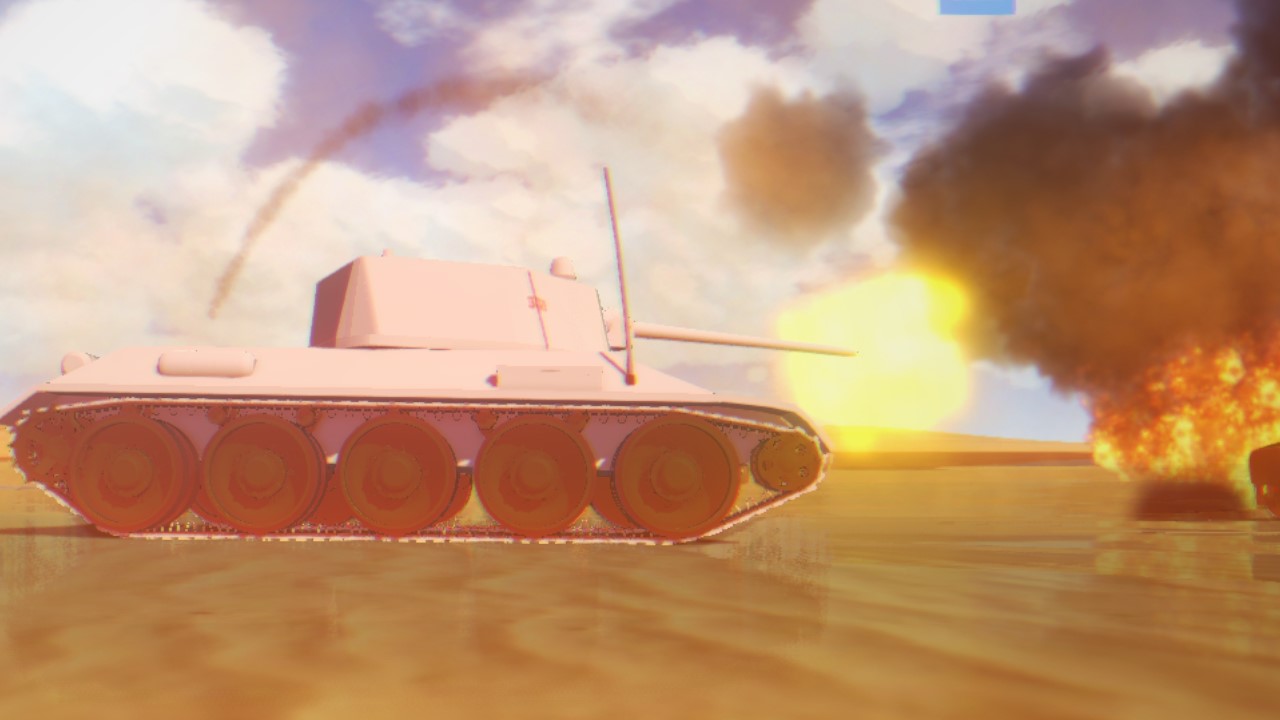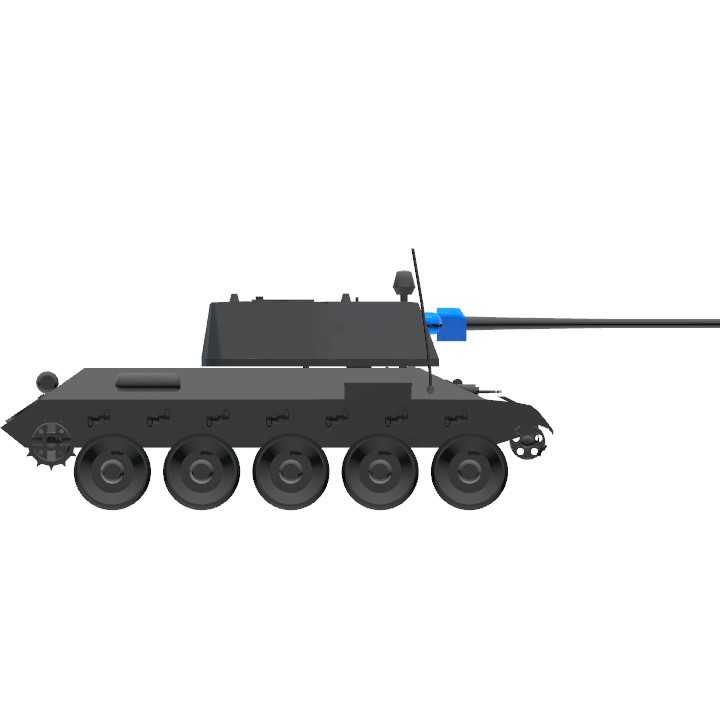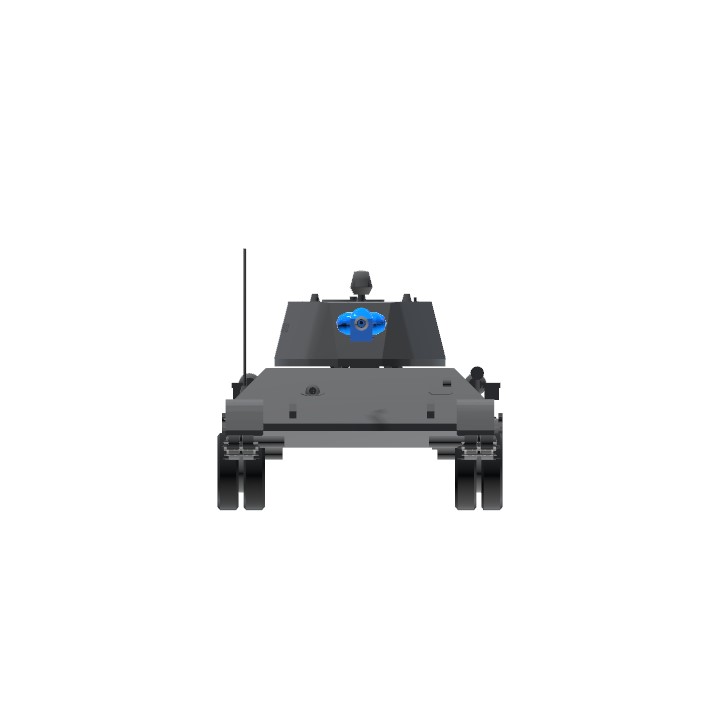History
The T-34 was and remains a legend. It is not only the most produced tank of the WWII-era, with 84,000 built (compared to the 48,966 Shermans of all versions) but also one of the longest-serving tanks ever built. Many are still stored in depots in Asia and Africa, and some served actively during the 90’s (such as during the 1991-99 Yugoslavian war). They formed the backbone of countless armored forces around the globe from the fifties to the eighties. The basic design was drawn for the first time in 1938 with the A-32, in turn partially derived from the BT-7M, a late evolution of the US-born Christie tank.
The first version of the T-34/76 came as a nasty surprise for the overconfident German troops in the fall of 1941, when it was first committed en masse. Not only were they able to cope with the mud and snow with their large tracks, but they came with a perfect combination of thick and highly sloped armor, efficient gun, good speed, autonomy and, above all, extreme sturdiness, reliability, ease of manufacturing and maintenance. A perfect winner for an industrial war and a significant leap in tank design. While the T-34 did have a number of deficiencies, the T-34’s influence on the future designs and the concept of the main battle tank is unquestionable.
Early precursor: The A-32
From the BT-IS, A-20, the BT-SV’s sloped armor (1936) to the five-roadwheel A-32, the blueprint of the T-34 was set up far before the war. The team lead by engineer Mikhail Koshkin promised Stalin to replace the BT series with a better “universal tank”. The bureau designed a sloped armored box encasing a powerful diesel V12 engine which was less sensitive than the high-octane petrol engines used in previous Soviet tanks. This was done both to increase the range and to avoid bursting into flames too easily, as the BT-5 and BT-7 did during the war against Japan in Manchuria.
The first prototype of the T-34 was an improved A-32 with thicker armor, which successfully completed field trials at Kubinka and was simplified for mass production. It was ready as early as the beginning of 1939, as USSR was undergoing a major rearmament plan. The first two pre-series vehicles rolled out of the KhPZ factory in Kharkov (Ukraine) during the very first month of 1940, under the patronage of Sergey Ordzhonikidze. From April to May they underwent a large array of difficult trials, rolling through 2000 km (1242 mi) from Kharkov to the Mannerheim line in Finland and back to the factory via Moscow (sadly, Mikhail Koshkin, the lead designer who took part in the grueling march, became ill and passed away soon after
T-34 model 1940
The T-34 was largely improved during trials and mass production was set up in September by Koshkin’s successor, chief designer Alexander Morozov. All previous models, the T-26, the BT-7 and the heavy multi-turreted T-28, were dropped from production to make room for the new medium tank. Production was also separated, Leningrad furnishing the L-11 gun, Kharkov – the diesel V12, Moscow – the electrical components and the armored hull, while the final assembly was performed at the Stalingrad tractor factory. After July 1941, all these vulnerable production centers saw a huge relocation effort to the east.
The T-34 model 1940, the first mass production model. The 1941 had many differences, mostly aimed towards easier production.
Only Stalingrad production remained in place until the very end of the battle, when Von Paulus’ army capitulated in early 1943. But the model 1940 was hampered by various deficiencies. The complex hull front armor piece was difficult to manufacture, there was a shortage of V12 diesels, so most of the model 1940 series tanks were equipped with the BT tank’s Mikulin M-17 engine at the Gorky factory, as well as provisional transmission and clutch. The initial L-11 76 mm (2.99 in) gun was criticized for having a low muzzle velocity and the F-34 was designed instead at Gorky. It was later put into production, equipping the first units in July 1941.
General overview
When all designed components were brought together, the new T-34 series was equipped with the final 76.2 mm (3 in) gun and was the basis for all versions until 1944. It was known as the T-34 (the Soviets do not seem to have made any effort to differentiate it from the later T-34/85). A new and improved coil-spring Christie suspension was fitted, as well as the intended V12 diesel and adapted clutch and transmission. The 10-RT 26E radio set was replaced by the 9-RS model and the tracks were slightly enlarged. The frontal armor was simplified for mass production, as well as many other elements. When out in business, the T-34 had no equivalent in the world. It was able to combine almost to perfection the magic triangle of speed, armor and armament.
The sloped armor was a good solution to deflect most hits while not relying on excessive thickness. First encounters in July 1941 proved that no German tank was able to reliably score a penetration. To the disappointment of the enemy officers, their shots simply bounced off these well-armored machines. The need for a more powerful gun, with very high velocity, was the origin of the Panther design (Panzer V).
The T-34 was equipped with a variety of hatches and turrets during its lifespan, but almost all had their upper hull equipped with railings to allow Soviet troops to travel on the tank, supplementing the lack of transports. None were ever equipped with an anti-aircraft mount and there were losses due to the new Stuka dive bomber antitank conversions (Ju-87G).
The T-34/76 was the mainstay of the Red Army from 1941 to the end of 1944, when sufficient numbers of T-34/85, a new tank in some aspects, gradually replaced them. The T-34 was a real shock for the Germans, as they had nothing like it. The sloped armor proved highly effective, despite their relatively low muzzle velocity gun, which was favorably compared to the guns of Panzer III and IV of the time. Their diesel was sturdy and able to cope with extreme weather conditions, their wide tracks were perfectly shaped to cope with the “rasputitsa” (a sea of mud) in autumn and the snow in winter. It was much easier to produce than any Panzer model before it and, for many frontline German units, the T-34 seemed like a difficult foe. Of course, that was not always true. A well-placed hit between the tracks and wheels could still disable them. And on the defensive, the German 88 mm (3.46 in) guns had no issues dealing with them.
The T-34 model 1941/42 interior. The floor where the commander stands is made of ammunition cases. The finishes and equipment were limited to the bare minimum.
Tactics
At the end of 1942 came a new version, the model 1942, limited to minor improvements to crew comfort and vision systems. The 76 mm (2.99 in) gun could fire high explosive rounds as well as armor-piercing ones. These were fatal to all Panzers except the late, heavily protected versions of the Panzer IV. They were sometimes paired with the slower but heavily armored KV-1 tanks. But German tactics, like in France, proved superior, and both well-coordinated Stuka attacks as well as the 88 mm (3.46 in) guns prevented the Russian T-34s from overwhelming the enemy. During the Moscow winter campaign and later at Stalingrad, the T-34s were massively engaged for the first time and overwhelmed German defenses. German tanks (and troops) were crippled by the icy weather.
The rubber from the wheels peeled off, the engines were slow to start and had to be slowly warmed up, machine-guns often jammed and mobility was almost impossible as the narrow tracks of the Panzer III and IV caused them to literally sink in the snow. Additionally, bad weather interfered with the aerial support, preventing any help from the Luftwaffe.
However, the new Panther proved lethal at long range against the T-34, which still had to catch its prey in close combat in order to penetrate the German tank. These tactics proved decisive at Kursk, when hundred of Panthers and Tigers, while being efficient at long range, were overwhelmed by thousands of T-34s striking from all sides.
Production problems
The T-34 was not the “perfect” tank that history and the internet sometimes make it seem. Poor quality assembly, roughly welded joints, combined with overall very harsh running conditions as well as low training quality, sometimes inept commanders, took their toll on every division equipped with the T-34. In some occurrences, more than half of the tanks engaged in combat were lost due to mechanical breakdowns and other teething problems.
The diesel engines were particularly sensitive to dust and sand. The first filters proved ineffective. The transmission and clutches often caused a serious amount of vibrations and occasionally failed. The T-34/76 was also often criticized for its cramped fighting compartment. Regardless of its quality, large numbers of T-34’s were lost due to lack of communications and poor doctrine.
A file of newly produced T-34 model 1942, en route for the frontline. These can be identified by their hexagonal turrets and the open twin “Mickey Mouse ears” hatches.
Sometimes entire spare transmissions and other mechanical parts were stowed on the tank, between the extra fuel tanks, next to the tarpaulin, shovel, pickaxe, iron cable and spare track links. At times, the lack of support vehicles forced the T-34’s to become their own support vehicles. In a major relocation effort due to the rapidly advancing German forces, the assembly lines were moved to the Dzerzhinski Ural Railcar Factory in Nizhny Tagil and Stalin Tractor Factory in Chelyabinsk (“Tankograd”), undoubtfully a difficult task for the thousands of people involved. But until the fall of 1942, the biggest part of the production came from eastern Stalingrad. There, the T-34s were thrown into combat right at the factory door.
The T-34/76 model 1941
This model was similar to the previous 1940 model. The most important improvement of Model 1941 was the more efficient, longer-barrelled F-34 76.2 mm gun. Many components were put under scrutiny for mass production, like the new gun mount, the welded turret with a new, single, wide hatch, and many other parts. The single hatch was retained for ease of production, but it was heavy and easily jammed, trapping everybody inside. In fact, it was hated by the crews (who suffered due to the poor comfort and poor ergonomics), being quickly dubbed the “pirozhok” (stuffed bun). The very large rear exhaust covers were another feature which did not last long. The turret lacked sufficient protection for the commander, with no special-purpose hatch or traversable periscope.
The T-34 model 1942 (left) and T-43 (right) side to side. The T-43 was a heavier derivative of the T-34, with the aim to replace both the KV-1 and the T-34. It had a much thicker armor, torsion-bar suspension and a three-man turret. After the Kursk Battle the project was canceled, as both mobility and armor thickness were insufficient facing the Tiger’s 88 mm (3.46 in) gun.
The single heavy, forward opening hatch had a single vision slit. Moreover, the commander was also responsible for aiming and firing the gun, due to the four men crew. This was not corrected until the introduction of the three-man turret with the T-34/85. Later on, many models had additional armor plating like the T-34E (“ehkranami” – screened) to answer the latest German gun development. The armor was largely improved compared to the 1940 model. Some 324 T-34’s were rearmed with a special high-velocity 57 mm (2.24 in) gun ZiS-4 or ZiS-4M, under the name of T-34/57, and used as tank-hunters, notably during the battle of Moscow.
The T-34/76 models 1942 to 1944
As the standardized machine tools used for the T-34 were not easily adaptable, changes were rarely introduced into the production process. Many features of the T-34 remained unchanged until 1942, despite the complaints of the crews and their commanders. The process was made simpler and the parts cheaper. For example, the commonly used F-34 gun was simplified to the point that nearly 200 pieces less were needed (from 861 to 614).
The gun sights and range finder remained crude, despite the fact that several gun mounts were alternatively used. The poor optics prevented the crews from using their guns at long range like the Germans often did. This led to aggressive tactics based on constant maneuvering, while the German tanks could stand in place and fire at approaching targets from a distance.
The lack of rubber often prevented the use of the standard rubberized wheels, and many bare-metal wheels of various designs were used. This can be seen on photographs as a strange mix of wheels. Early 1942 saw the introduction of a new, much better hexagonal turret, a sub-product of the abandoned T-34M project, which was a great improvement over previous models. Notably, the big hatch was removed and replaced by separated hatches (dubbed “Mickey mouse” by the Germans, due to the way it looked from the front with the hatches open).
In the fall of 1943, the turret received a new specially-designed all-around vision commander cupola. Production cost was halved and production time reduced by 50% despite the fact that most of the male workers left for the battlefield by that point, and were replaced by women, children, disabled, or the elderly. In 1943 T-34 production rate was about 1300 per month. Quality standards were poor and they were roughly finished, even by US mass production standards. The last model was the T-34/76 model 1944, with the simplified ZiS S-53 gun, turret radio and improved commander sights. However, production was gradually decreased to make way for the significantly better T-34/85.
Controls
Activation 1 - Doors
Activation 2 - Lights (not including interior lights)
W/A/S/D/Arrow Up/Arrow Down/Arrow Left/Arrow Right - Move
VTOL - Turret Turn
Trim - Tank Turret
Instructions are in the interiors of the tank.
Gallery



Specifications
General Characteristics
- Created On Windows
- Wingspan 16.4ft (5.0m)
- Length 39.7ft (12.1m)
- Height 12.3ft (3.8m)
- Empty Weight 61,435lbs (27,866kg)
- Loaded Weight 62,615lbs (28,402kg)
Performance
- Wing Loading N/A
- Wing Area 0.0ft2 (0.0m2)
- Drag Points 10491
Parts
- Number of Parts 370
- Control Surfaces 0
- Performance Cost 1,177
Required Mods
-
Tracks 2
by MOPCKOE_DNISHE
Version 0.84 (11/1/2021 2:11:26 PM)
View Mod Page





@Cadvalto dont worry ill make more mobile friendly tanks (if I'm even gonna come back)
Tracks.... Tracks... Tracks.. Tracks.. TRACKS!! I NEED THAT'S MOD!!! I NEED IT FOR MY TANKS!!!!!!
But no matter what, I only use Android.
@AVeryRandomBuilder8733 ok, probably a fun project or something idk
Edit: I don't have any knowledge in plane interiors
@HikerBiker69 If making interiors are easy. I dare you to make a A-10 interior. (Warthog)
@HikerBiker69
Probably?
I haven't tried, admittedly, but something tells me that , unless well-skilled, accurate interiors probably aren't a walk in the park.
Or maybe that's just my dumb ass.
@AVeryRandomBuilder8733 yeah I know :)
@Graingy Interiors? That probably isn't that hard to make
@AVeryRandomBuilder8733 was Talking about the turret interior, but cool build anyway
@Graingy the 2 instruments are not history-based i just made a mistake if i removed the mistake it would take few days
@Graingy the interior looks like a nightmare because of i made a mistake on making the tank
@AtomicDonut714 yup
@Hahahahaahahshs the T-34/76 and BT-7 looks similiar
@HikerBiker69 yeah it's the T-34/76 turret
@HikerBiker69 No.
The description is a bit long for me to read, but if I had to guess I'd assume it was a concession in favour of giving it an interior.
Truly one of the tanks of all time.
Did the t34s turret really looked like that???
for a minute i thought i was looking at a bt-7